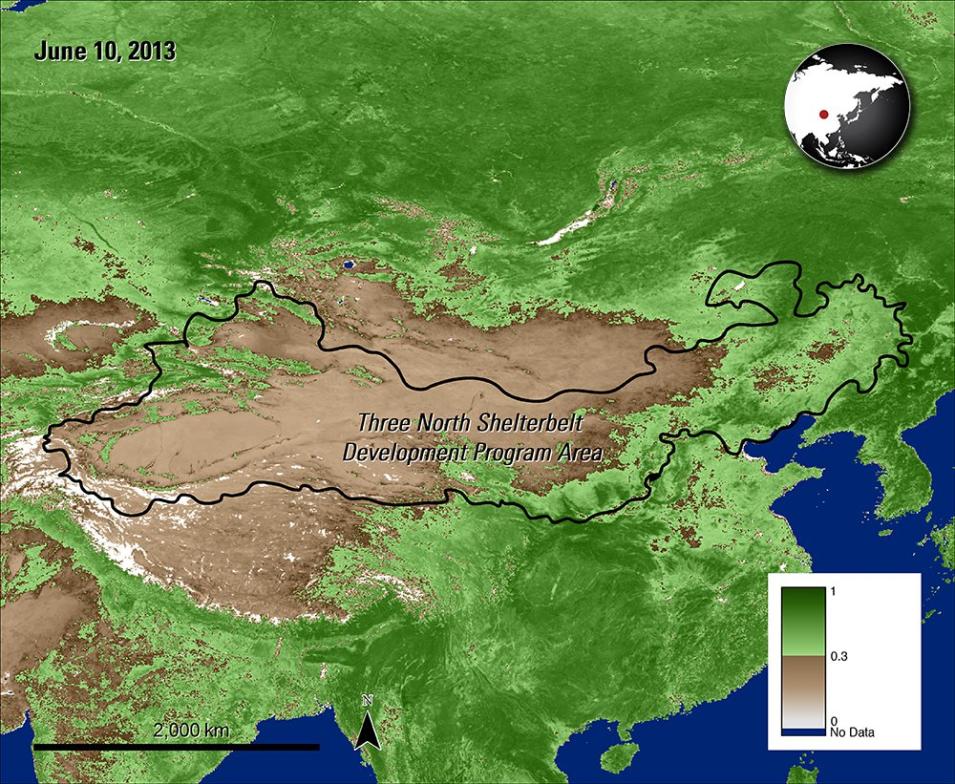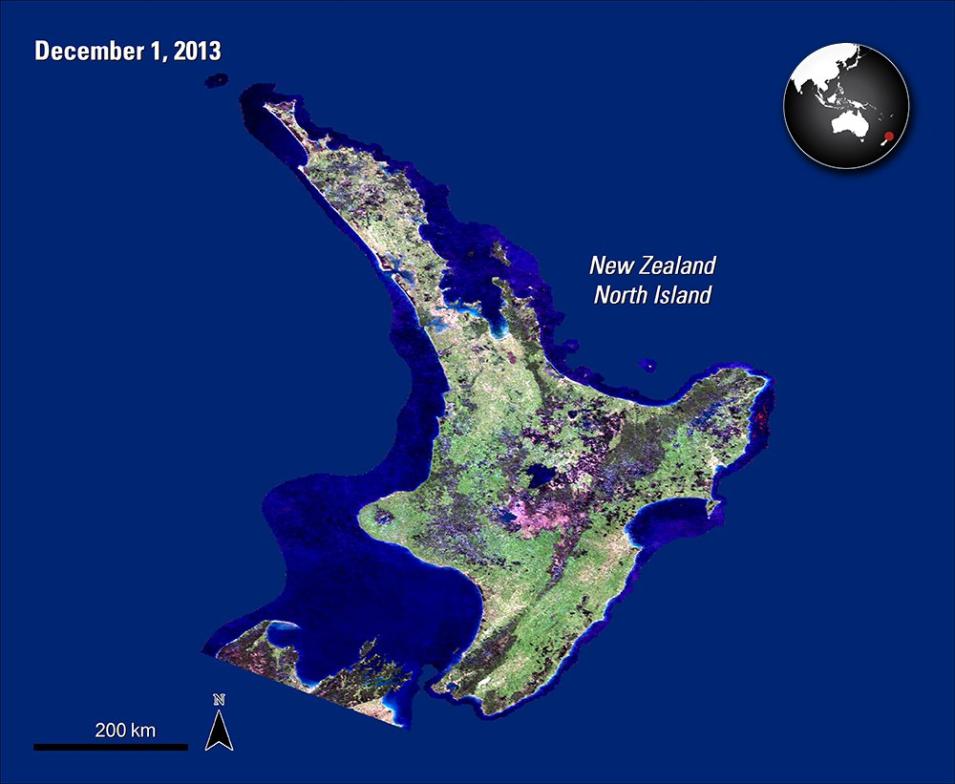Scientific Objectives
In their paper "Multiple afforestation programs accelerate the greenness in the ‘Three North’ region of China from 1982 to 2013" published in Ecological Indicators, Zhang and others (2016) use Normalized Difference Vegetation Index (NDVI) measurements to assess the effectiveness of the “Three North” Shelterbelt Development Program (TNSDP), an ecological restoration program in northern China. The TNSDP, which began in 1978, focuses on planting protective forests in arid and semi-arid areas of the northern portion of China. It is the largest afforestation program in the world, covering 42.2% of China’s total land area. The TNSDP and other afforestation programs were instituted to combat desertification, sandstorms, soil erosion, and land degradation in the dry northern regions of China.
Instruments Used
The authors apply several growth trend analyses to the calculated mean NDVI for the growing seasons (May to September) of each year from 1978 to 2013. They also use Global Inventory Modeling and Mapping Studies (GIMMS, 1982 – 2006), GIMMS third generation (GIMMS 3g, 1982 – 2012), and MODIS (MOD13C1, 2000 – 2013) data to calculate mean NDVI.
Major Findings
Results of the study show an increase of NDVI over the 30-year study period, which is attributed to multiple afforestation programs and continued growth of planted trees.
References
Publication Reference
Zhang, Y., Peng, C., Li, W., Tian, L., Zhu, Q., Chen, H., Fang, X., Zhang, G., Liu, G., Mu, X., Li, Z., Li, S., Yang, Y., Wang, J., and Xiao, X., 2016, Multiple afforestation programs accelerate the greenness in the ‘Three North’ region of China from 1982 to 2013: Ecological Indicators, vo. 61, part 2, pp. 404-412.
doi:10.1016/j.ecolind.2015.09.041
Image Reference
Granule ID: MOD13C1.A2013273.005.2013304174148


